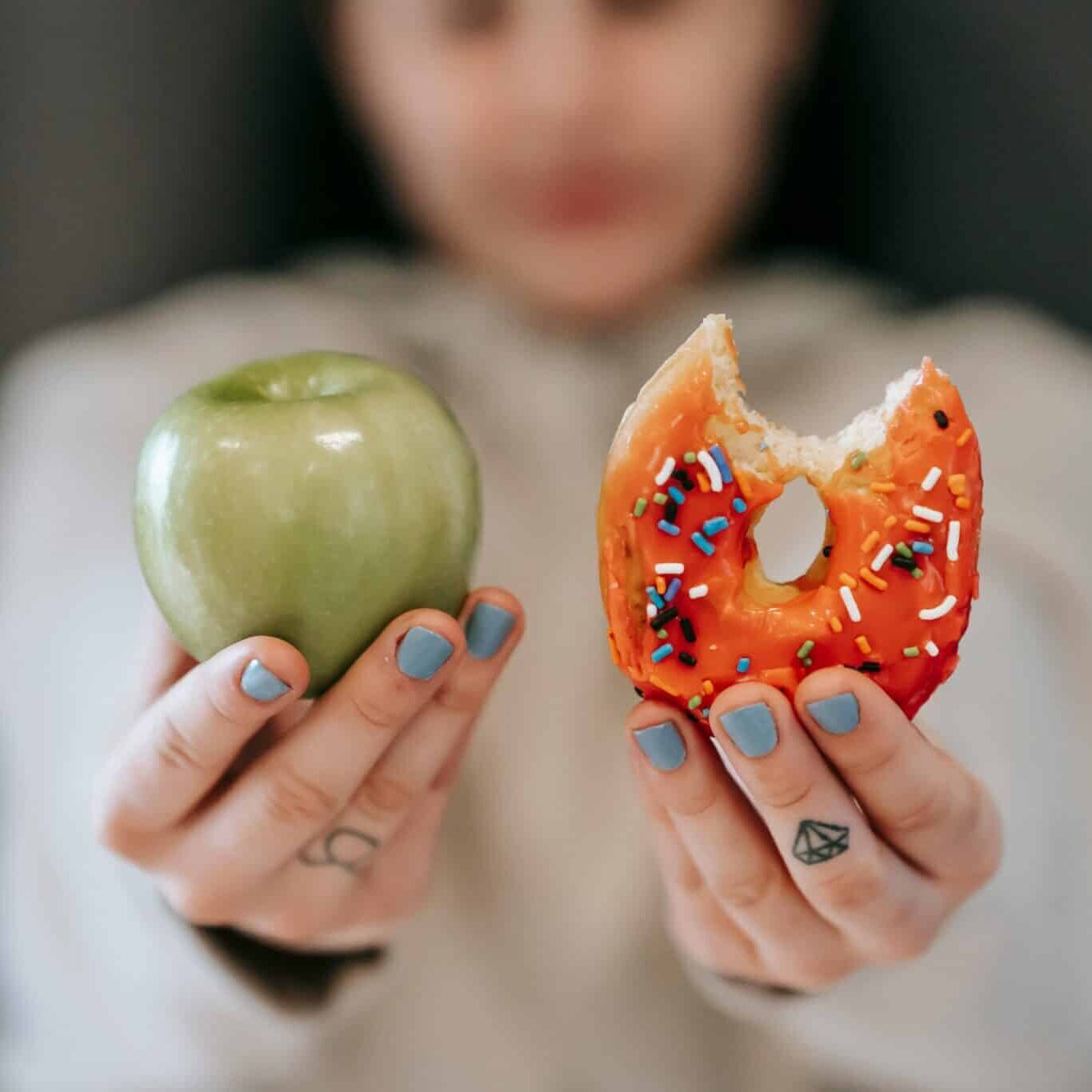Ultra-processed foods (UPFs) have quietly taken over our plates. In fact, they now make up over half of the average UK diet according to the National Diet and Nutrition Survey, while fruit and vegetable intake has steadily declined.
It’s no wonder UPFs are increasingly portrayed as dietary villains. But is it really that simple? The truth is more nuanced. Not all processed foods are harmful—and some even play an important role in public health. Still, there’s growing evidence that a diet heavy in ultra-processed foods may be undermining our wellbeing.
So, what exactly are ultra-processed foods, and how do they affect our health? Let’s explore.
What Are Ultra-Processed Foods?
Food processing exists on a spectrum—from minimal (like washing or freezing vegetables) to ultra-processed. Many of the foods we eat fall somewhere in between. Even home baking is a form of processing.
The NOVA classification defines UPFs as:
“Formulations of ingredients, mostly of exclusive industrial use, typically created by a series of industrial techniques and processes.”
In everyday terms, think of foods with additives you wouldn’t usually keep in your kitchen: emulsifiers, colourings, artificial flavours, stabilisers, and preservatives. Examples include packaged crisps, fizzy drinks, sweetened yogurts, and mass-produced bread.
Not all processing is negative. Pasteurising milk prevents illness, while fortifying flour helps combat nutrient deficiencies. The challenge arises when foods are engineered not just for safety or enrichment, but for maximum palatability—often at the expense of nutrition.
THIRD SISTER TIP: READ THE LABEL
If you can’t recognise more than half the ingredients—or wouldn’t typically cook with them—it’s likely a UPF.
Is Enriched Flour Ultra Processed?
Enriched flour is one of the most commonly misunderstood ingredients in the UPF debate. In the UK, white flour is often “enriched” or “fortified” with nutrients like iron, calcium, and B vitamins as part of long-standing public health policy.
So, is enriched flour ultra processed?
- On its own: Enriched flour is considered a processed ingredient, not an ultra-processed food. It has been milled and fortified, but isn’t typically consumed alone.
- In products: Many foods made with enriched flour become ultra processed when combined with added sugars, oils, emulsifiers, stabilisers, and flavourings. Think packaged cakes, pastries, biscuits, and mass-produced breads.
The key issue isn’t enriched flour itself—it’s the types of foods it commonly appears in, and how frequently these foods displace whole, nourishing options.
A Brief History of Ultra-Processed Foods
Food fortification has been part of UK policy since the 1940s. To address wartime malnutrition, staples like white flour were enriched with calcium and iron, and margarine was fortified with vitamins A and D. This public health strategy remains in place today, from fortified cereals to plant-based milks.
But as the food industry evolved, processing shifted away from population health and towards profit. Shelf life, texture, colour, and “craveability” became priorities. What started as a tool for nourishment slowly transformed into products that are calorie-dense, nutrient-poor, and often addictive.
This history complicates the UPF debate: while some processed foods promote health, others are clearly linked to harm.
The Health Disruption of UPFs
Research is increasingly clear about the associations between ultra-processed foods and chronic disease. A 2024 BMJ study linked higher UPF consumption with:
- Cardiovascular disease (including heart attacks and strokes)
- Obesity
- Type 2 diabetes
- Sleep problems
- Anxiety and depression
It’s not always clear whether the harm comes from the processing itself or the typical nutritional profile of UPFs (high in salt, sugar, and fat). Either way, the risks are real.
Common Ultra-Processed Foods to Avoid
Ultra-processed foods often share similar characteristics: they’re convenient, engineered for taste, and easy to overeat—while offering very little in the way of nutrition. Here are common examples to be mindful of:
Breakfast
- Sweetened cereals with long ingredient lists
- Flavoured instant porridge sachets
- Packaged pastries
- Ready-to-drink breakfast shakes
Snacks
- Crisps and flavoured savoury snacks
- Chocolate bars and confectionery
- Protein bars containing sweeteners and additives
- Heavily processed “diet” snacks
Drinks
- Fizzy soft drinks
- Energy drinks
- Sweetened iced coffees and flavoured milks
- Fruit drinks with added sugars
Convenience Meals
- Frozen ready meals with long ingredient lists
- Packet sauces high in sugars and thickeners
- Instant noodles with additive-heavy flavour sachets
- Ultra-processed meat products like nuggets
Sweets & Desserts
- Packaged biscuits
- Ice creams with emulsifiers and stabilisers
- Mass-produced cakes and puddings
Gut Health and Beyond
UPFs don’t just displace healthier foods. Studies suggest they may alter the gut microbiome, which affects everything from digestion to immunity and even mood. A disrupted microbiome has been tied to inflammation, weight gain, and poor mental health.
Overeating by Design
Ultra-processed foods are engineered to be hyper-palatable—crispy, sweet, salty, and satisfying all at once. This makes them easy to over consume, fuelling weight gain at a time when obesity rates are rising worldwide.
THIRD SISTER TIP: CROWD OUT WITH WHOLE FOODS
Instead of cutting out UPFs cold turkey, focus on adding more fruits, vegetables, whole grains, and legumes to your meals. When your plate is full of nutrient-rich foods, UPFs naturally play a smaller role.
The Nuanced Reality
It’s tempting to draw hard lines: UPFs are bad, whole foods are good. But it’s not always that simple. A homemade cake may be minimally processed but still high in sugar. Conversely, fortified cereals may be classed as UPFs yet provide valuable nutrients for some populations.
Balance is key. Prioritising whole foods—fruits, vegetables, legumes, nuts, seeds, lean proteins—remains the foundation of a healthy diet. But labelling all UPFs as “poison” oversimplifies a complex picture.
How to Identify Ultra-Processed Foods
Spotting UPFs becomes easier once you know the common signs. Here are simple ways to assess whether a product is ultra processed:
1. Check the Ingredient List
- Is the list unusually long?
- Are there ingredients you wouldn’t cook with at home?
- Does it contain multiple additives: emulsifiers, stabilisers, colourings, flavourings, sweeteners?
2. Look for “Ready to Eat” Convenience
If a product is designed to be eaten immediately with minimal prep, it’s more likely ultra processed.
3. Beware of Health Claims
Front-of-pack claims like “high protein” or “low fat” can distract from the reality: a highly processed product built on refined starches and additives.
4. Check Shelf Life
If it lasts months without changing texture or flavour, it’s likely to fall into the ultra-processed category.
The easiest question to ask is: “Does this look like food from a kitchen—or a factory?”
Finding Balance in a UPF World
The goal isn’t total elimination. In modern life, ultra-processed foods are almost unavoidable. Instead, the focus should be on education, moderation, and informed choices:
- Judge foods by their full composition—not just their processing category.
- Minimise those high in added sugars, saturated fats, and sodium.
- Make whole foods the majority of your plate.
THIRD SISTER TIP: SMALL SWAPS, BIG IMPACT
Swap sugary breakfast cereals for overnight oats, fizzy drinks for sparkling water with lemon, and packaged snacks for nuts or fruit. Consistency matters more than perfection.
Healthier Alternatives to Ultra-Processed Foods
Reducing UPFs doesn’t mean eliminating convenience or pleasure. Simple swaps can help you nourish your body without feeling restricted.
Breakfast Swaps
- Sugary cereals → oats with fruit, nuts and seeds
- Instant sachets → plain oats flavoured with cinnamon or berries
- Packaged pastries → wholegrain toast with nut butter
Snack Swaps
- Crisps and chocolate → fruit, nuts or plain popcorn
- Protein bars → Greek yoghurt with berries
Drink Swaps
- Fizzy drinks → sparkling water with lemon
- Sweetened iced coffee → unsweetened coffee with milk
Convenience Meal Swaps
- Ready meals → batch-cooked stews or curries
- Instant noodles → wholegrain noodles with homemade sauces
Sweet Cravings
- Packaged cakes → home-baked treats with simpler ingredients
- Ice cream → Greek yoghurt with honey or dark chocolate
Ultra-Processed Foods FAQs
Are all processed foods bad for you?
No. Many processed foods are safe, nutritious and convenient. Problems arise with ultra-processed foods, which are often high in additives, sugars, unhealthy fats and low in fibre.
How do UPFs affect health?
Research links high UPF intake with chronic conditions including obesity, type 2 diabetes, heart disease and mental health issues. These foods are often engineered for overeating and low in essential nutrients.
Do I need to avoid UPFs completely?
No. A more realistic approach is to build meals around whole foods most of the time, while enjoying UPFs occasionally without guilt or restriction.
What’s one easy first step to cut down?
Start with one small swap—such as switching from sugary cereals to oats or trading fizzy drinks for sparkling water with lemon. Small changes add up quickly.
The Takeaway
Ultra-processed foods are a reality of our modern food system. While some forms of processing are beneficial, over reliance on UPFs comes with well-documented risks—from heart health to mental wellbeing.
Instead of fearing food, focus on building a plate that celebrates whole foods while making space for flexibility. The healthiest diet isn’t about rigid rules—it’s about balance, nourishment, and sustainability.
If you’d like support in reducing UPFs and building a lifestyle that feels both realistic and enjoyable, I’d love to guide you. Consider booking a free consultation with me to explore how personalised nutrition can fit seamlessly into your daily life.



